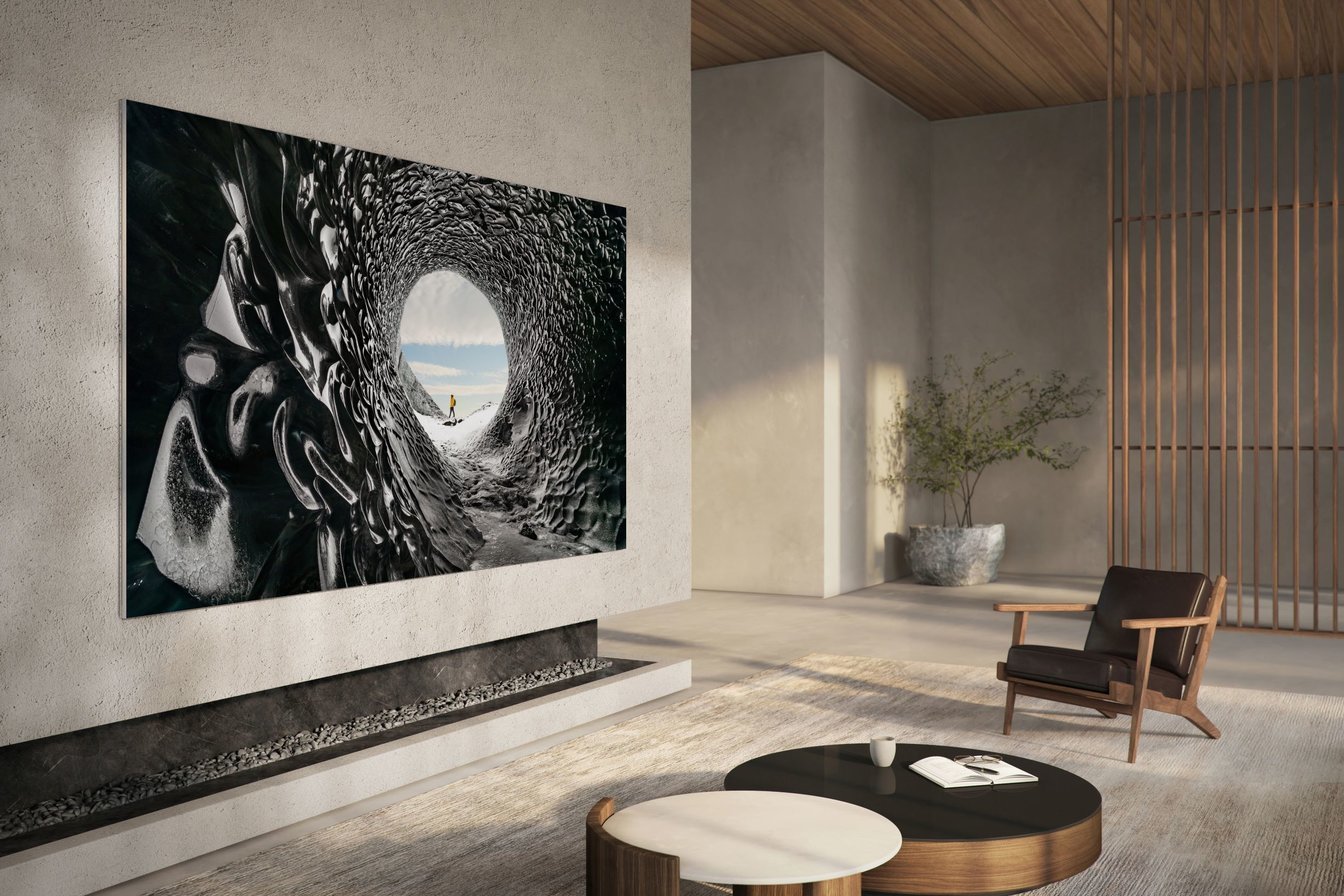Samsung Electronics’ ridiculously expensive new MicroLED TV “The Wall” might become a little bit more affordable if the company is able to implement some new innovations to its production process, South Korean media reports say.

The Elec reported this week that Samsung is trying to reduce the number of steps involved in manufacturing its MicroLED TVs by applying something called RGB (red, green and blue) one-chip transfer technology.
The plan is to implement the R, G and B LED chips that are currently transferred separately into just one chip. This method will increase the size of each individual chip, and that should make it possible to transfer them onto printed circuit boards more easily, thereby minimising production defects and improving yields, The Elec reported.
Transferring the LED chips onto the circuit board is believed to be one of the biggest challenges in MicroLED production as they measure micrometers in size.
In addition, the method will also mean the chips can be transferred faster, which will reduce overall production time for each new TV. It would also mean fewer repair processes are required.
This all translates to lower costs, which could then be passed on to consumers.
Samsung announced the 110-inch consumer MicroLED TV in December last year. MicroLED is a cutting edge display technology that uses thousands of micrometre-sized LED lights that eliminate the need for a backlight and colour filters used in traditional LCD displays. The LEDs are self-illuminating, which means they produce colour and light from their own pixel structure. This means MicroLED TVs can reproduce 100% of the DCI and Adobe RGB colour gamut, resulting in stunning, highly accurate colours and brightness. Moreover, because the LEDs have their own light source, it means they can also switch themselves off to create the perfect blacks and extremely realistic contrast that’s come to define OLED TVs.
But although Samsung has pitched The Wall as the first ever consumer MicroLED TV, very few consumers can afford to buy one as it still carries a sky high price tag of 170 million won in South Korea. That’s about £110,000 in U.K money.
One of the reasons for that enormous price tag is that Samsung had to transfer around 8 million R, G and B chips onto the circuit board of each TV separately, The Elec said. It also had to carry out repairs to any chips that were damaged during the transfer process. It’s not clear how many chips are damaged during this process, but The Elec points out that even a 1% defect rate would mean Samsung has to swap out 80,000 of those chips for each TV. It’s fair to assume that the costs of doing that adds up rather quickly.
Samsung is planning further innovations that might reduce its production costs even more. The Elec said that once it has cracked the RGB one-chip transfer method, it will then attempt something called RGBRGB one chip, which involves putting six LEDs in just one chip, instead of three. The company is also planning to use magnets to align the chips in order to speed up production even more.
Besides the 110-inch version of The Wall, Samsung is also planning to launch a 99-inch model later this year, followed by smaller models in the 70-inch to 80-inch range, most likely next year.
The combination of smaller sizes and the new production techniques may well help Samsung to reduce its costs, but it’s not clear by how much. Despite Samsung’s best efforts, analysts say it will likely be several years before the technology becomes affordable enough for the average consumer to enjoy.